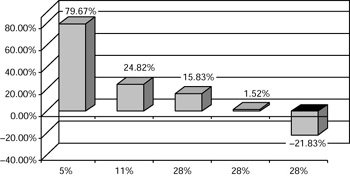Super Customer Service
|
You hear people saying that no one is making money on the Web, but that’s not quite true. Few companies are profiting from sales to consumers over the Web, but hundreds of companies are saving money and building customer relationships through customer service on the Web. These functions generate more profits than all direct Web consumer sales put together.
Marketing and customer service are usually separate departments within a company. They have separate goals and methods. However, that situation is changing because of the realization that good customer service leads to higher levels of retention and sales. There are several factors driving this change:
-
Industry has discovered the value of loyal customers. They buy more, buy more often, are cheaper to serve, have higher retention rates, and are more profitable than newly acquired customers.
-
Marketers have discovered that there are two methods that it can use to influence the level of customer loyalty: recruiting the right kind of customers to begin with, and treating them very well once they are acquired.
-
Excellent customer care is the most important method for improving customer loyalty. Customer service personnel are the front-line troops in the battle to win customers’ loyalty.
-
To provide good customer care, customer contact personnel have to be empowered with information and the authority to make decisions and to act on the customer’s behalf.
In other words, marketing is no longer a matter of thinking up clever advertising and direct-mail pieces. Good marketing involves everyone in the company who has contact with customers. Marketing and customer service are coming together.
Customers Are Not All Alike
Some customer service advocates say, “We will give super service to all of our customers.” This is a lofty sentiment, but a bad idea. Companies are learning that we must not treat all customers alike, because customers are not all alike. Some are loyal and put all their trust in us. Others are indifferent and spend most of their money elsewhere. Many customers not only are not profitable but cost us money and will never be profitable. Figure 11-1 repeats the graph of the customers of a southern bank that was shown in Chapter 1.

Figure 11-1: Profitability
Why should we spend money trying to retain customers who are robbing the company of value and hurting the enterprise? What we really want to do is provide super service to the top two segments so that we can retain them. They are the lifeblood of the enterprise. We want to give them services that we could not possibly afford to provide to everyone. If we limited our services to those things that we could afford to give everyone, the services would be so meager that they would be meaningless to the recipients and useless for influencing loyalty.
So what are the rules for successful customer service programs?
-
Provide good information. Customer service reps (CSRs) must have access to the customer marketing database. They must know what each customer has bought in the past and each customer’s profitability. They must have a record of past complaints and compliments. They must know who the key people are in each firm and what those people’s opinions about the CSR’s company and its products are.
-
Empower customer service. If customer service personnel are just message takers, people will not unburden themselves to them. Customer service personnel have to represent your firm. They must be able to do what the owner of the firm would do: make decisions that are in the interest of both the customer and the firm. They must be delegated the authority to act to solve problems.
-
Set up test and control groups. Good customer service is not just nice to have. It can be highly profitable. However, you must prove to management that the money spent on customer service is creating customer loyalty and profits for the firm. The only way that can be done is to set up control groups so that you can measure the performance of the test groups correctly. Many executives will oppose the creation of control groups, saying, “We must treat all customers alike.” Fight this old-fashioned way of thinking with all your might. Without control groups, you can never prove that what you are doing is having the desired effects and justifies your enlarged customer service budget.
|
EAN: 2147483647
Pages: 226